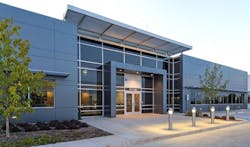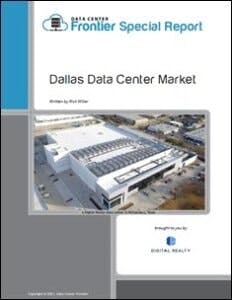This week we conclude our special report series on the Dallas data center market by looking at why the market is a hotbed for edge computing and the key players with deployments in the region.
Get the full report.
Although Dallas is well known as a connectivity center and “core” network hub, it is also a hotbed for new infrastructure for edge computing, a model which shifts data processing and services closer to the end user. The trend is driven by the increased use of consumer mobile devices, especially consumption of video and virtual reality content and the growth of sensors as part of the Internet of Things.
Several leading players in the edge market have deployments in Dallas, showcasing innovation and laying the groundwork for future growth. Here are some examples:
- Amazon Web Services has announced plans to bring a “local zone” to Dallas in 2021. With Local Zones, AWS is creating a more distributed infrastructure to support edge computing and low-latency applications. AWS typically works with local colocation providers to provision Local Zones of about 2 MW of capacity. Dallas is also one of the deployment sites for Verizon 5G Edge, a mobile edge computing (MEC) platform powered by AWS Wavelength, a software product that embeds AWS compute and storage services in the telecom network, enabling developers to use 5G connections to create low-latency apps for machine learning, virtual reality and Smart Cities.
- Edge computing specialist Vapor IO is operating several of its data center modules in Dallas, which is one of the five early hubs for its Kinetic Edge network, which uses both wired and wireless connections to create a reliable, low-latency network of colocation sites. Vapor IO is partnering with Digital Realty to offer an “edge-to-core” deployment model, and working with IT Renew to offer recycled IT hardware from hyperscale facilities.
- Edge computing startup EDJX is deploying capacity in a Cyxtera data center in Dallas, integrating a software-defined power solution from Virtual Power Systems (VPS) that brings new efficiencies to power management. EDJX offers several form factors for placing distributed edge servers in offices and stores, ranging from micro servers the size of a credit card to full racks of Open Compute hardware. Like Vapor, EDJX is offering recycled hardware from ITRenew.
While we are in the early days of edge computing, successful edge ecosystems will likely mean additional traffic and business for nearby data centers, which can offload data for additional analytics and modeling work. The significant population and mix of enterprise IT and service providers in Dallas/Fort Worth positions the region as a potential growth hub for edge applications.
Download the full report, Dallas Data Center Market, courtesy of Digital Realty for an exclusive look at key service providers in the Dallas/Fort Worth market. The report profiles twenty-two data center operators in the region.
About the Author




